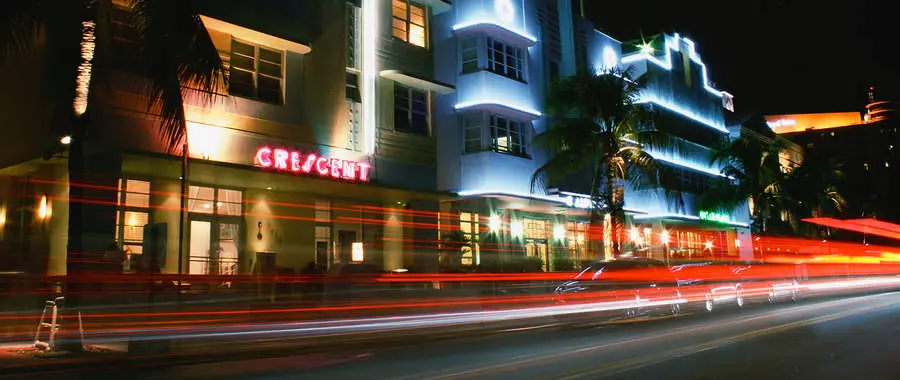US wealth and power: West & South, Texas, California, Florida, Architecture, Architects
Joel Solkoff’s Column – Volume II, No. 1
Column by Joel Solkoff, PA, USA
Writing on architects plus their role in the imminent global Baby Boom housing crisis
______________________________________________________________________
Joel’s Column Volume II, Number 1
If I were an architect eager to launch my career in the U.S., I would focus on three states:
Texas, California, and Florida
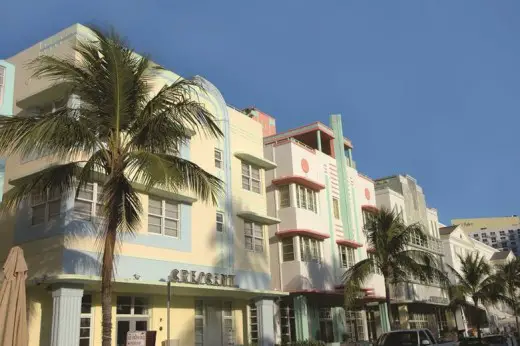
photo : The Crescent a 1938 Art Deco hotel, Henry Hohauser architect, photo courtesy of the City of Miami Beach, Florida
The notorious bank robber Willie Sutton was asked why he robbed banks. “Because that is where the money is.”
Despite the incredibly exciting renewal taking place in New York City, the reality is that the wealth and power in the United States has shifted.
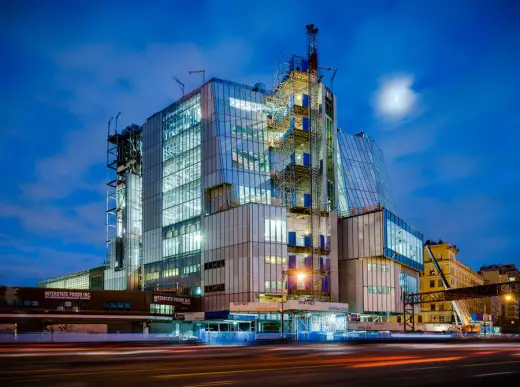
photo : Renzo Piano’s Whitney Museum of American Art, December, 2013, scheduled for completion 2015, New York City, Photo by Nicolas Lemery Nantel, reproduced by permission of the Whitney
The wealth and power in the U.S. now resides in the West and in the South. With that shift has come opportunities for architects in such states such as Texas, California, and Florida.
Consider the census returns. Every 10 years, according to the Constitution of the United Sates. a formal count must be made of the population. This is a major effort. The most recent census took place in 2010 at a cost $13 billion. For convenience I will refer to the 2010 census as today,
In 1940, less than two years before the entry of the U.S. into World War II, New York State (which includes New York City) was the largest state compared to California which ranked sixth.
Today, California with its 37 million people is the largest U.S. state compared to New York with its population of 19 million. One out of eight Americans lives in California. If California were an independent country, its economy would rank ninth in the world.
California has become the home ground of Canadian-born architect Frank Gehry. When awarding the Pritzker Prize, which has been referred to as “architecture’s Nobel prize,” the Pritzker Jury took note of, Gehry’s “populist Southern California perspective.”
In 1940, Texas was the sixth largest U.S. State. Today, it is the second largest—larger by two million people than New York. When Renzo Piano, born in Genoa, Italy, received his first U.S. commission it was in Texas and indeed it is in Texas that Piano completed his most recent commission.
++++
What happened between 1940 and the present? The veterans returning home from World War II multiplied and created the largest generation in U.S. history—a generation that transformed the landscape of this country.

photo courtesy of the Fontainebleau Hotel
++++
In 1950, at the age of 3, I moved to Miami architecture Beach, Florida. The 1940 census had listed Florida as the 27th largest state. Today, Florida, one of the fastest growing states is ranked fourth directly after New York.
In 1954, at the age of 7, I attended the opening of the Fontainebleau, which Wikipedia describes as “arguably the most luxurious hotel on Miami Beach, and is thought to be the most significant building of Morris Lapidus’s career.” In his autobiography entitled Too Much Is Never Enough, Lapidus wrote: “If you create a stage and it is grand, everyone who enters will play their part.”
No architect “ever worked harder to capture the spirit of American wealth and glamour after the Second World War…work so striking and so large in scale it was impossible for…fellow architects to ignore….:Lapidus received a snigger” from the architectural establishment wrote Tom Wolfe in his engaging critique of U.S. architecture From Bauhaus to Our House
++++
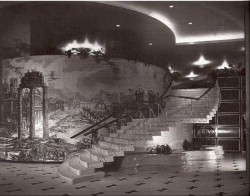
photo courtesy of the Fontainebleau Hotel
++++
The New York Times wrote of the Fontainebleau, “It had what was called a staircase to nowhere that actually led to a modest cloakroom, so that dinner guests could leave their coats and parade down in their sparkling jewelry and décolletage to the delighted stares of the crowds in the hotel’s lobby. The hotel was once called ‘the nation’s grossest national product.’ But Lapidus dismissed all critical jibes. He proudly referred to the Fontainebleau as ‘the world’s most pretentious hotel.’”
++++
Sir Banister Fletcher’s A History of Architecture edited by Dan Cruickshank notes, “The United States of America has been the richest and most powerful country in the world throughout the second half of the twentieth century. In such a well-developed industrialized society…[C]limate can be modified artificially, land can be settled or abandoned with impunity, materials can be imported, new techniques can be invented and new worlds of significance and meaning can be created. America builds what it wants to build. In these circumstances, architecture, traditionally the mirror of a society’s propriety and preoccupations, sometimes presents a distorted image.”
++++
My life as a child in Miami Beach certainly presented me with a distorted image of what I choose to call reality. Sundays were reserved for a visit to the latest hotels each featuring luxury intended to outpace previous luxury. Air conditioning was not commonplace, but these new hotels featured lobbies chilled to 55 degrees F so female guests could sport mink coats. A good friend learned to ice skate in a rink while the outside temperature was in the 80s.
Last year, Renzo Piano announced in Greece that sustainability was the hallmark of a new architectural age. Yet I grew up in an era where gasoline prices were 25 cents a gallon or less. The massive migrations of my fellow U.S. Baby Boomers South, West, and to the suburbs provoke strong recollections of a different time and age—a time and age that has thus failed to meet the requirements of today.
There have indeed been major architectural developments throughout the state—developments worthy of attention beyond the tourist-centric requirements of Miami Beach—a small island to the east of Miami, once a sleepy southern town Frank Lloyd Wright called “a city in search of architecture.”

The search is over. Photo courtesy Wikipedia Commons
+++
I conclude with a sentimental Internet voyage to the Crescent Hotel, my first residence in south Miami Beach.
The current owners describe the hotel as a luxurious residence in south beach’s fashionable multi-cultural art deco district. During my childhood, south beach was a slum. My neighbors were workers at the big hotels to the north of the island (such as the Fontainebleau) and the elderly poor who hung their laundry off balconies. The refugees from Cuba had not yet settled there with their dramatic energy. Local businessmen talked of the days when south beach would return to its previous glory. They died before they could see their dream come true.
I grew up among startlingly beautiful architecture—not realizing the beauty around me.
Here is the Crescent Hotel today:
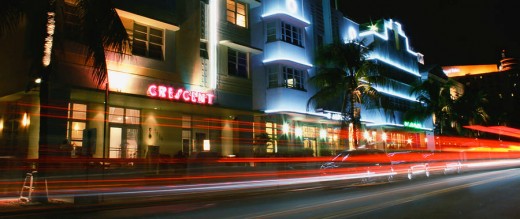
Photo courtesy Crescent Suites Hotel which notes the facade “resembles a fine steam ship with all of its port holes. Neon graces the gentle lines, arcs, and portals giving the resort an evening glow of style and polish.”

Building permit Crescent Hotel. Special thanks to Nannette Rodriguez, City of Miami Beach, Communications Director and Debbie Tackett, Principal Planner, Miami Beach Planning Department
Goodbye and good luck.
Joel Solkoff’s Column Volume II, No. 1
Please write: joel@e-architect.com
Copyright © 2014 by Joel Solkoff. All rights reserved.
*******************
Joel Solkoff – regular guest editor at e-architect
Architecture in USA
Contemporary Architecture in USA
J.P. Morgan Library and Museum Building, New York City, USA
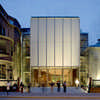
photo by Michel Denancé, provided by permission of the Morgan Library and Museum
J.P. Morgan Library and Museum Building : architecture article by Joel Solkoff. 13 Jul 2013
Comments / photos for the US wealth and power in the South & West, Texas, California, Florida – Joel Solkoff’s Column Vol.II, Number 1 page welcome

